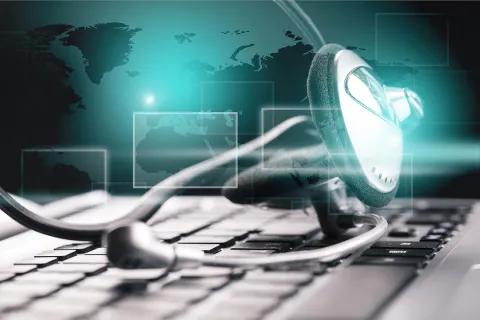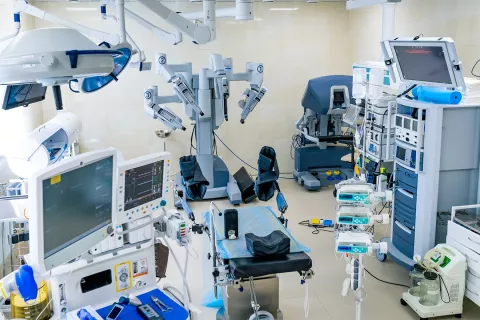
Ensuring that a medical device works safely and effectively after it is launched in the market is critical. That is where post-market surveillance (PMS) comes in, forming an integral part of medical device lifecycle management. Market Authorization is just the beginning, as pre-market testing and clinical trials cannot account for all real-world scenarios. PMS helps in monitoring the performance of the device in real-world clinical scenarios, identify potential risks that may happen in them, and take corrective actions that protect patient safety and maintain compliance with Regulatory requirements.
Let's look at PMS in EU MDR/IVDR in more detail
Post-market surveillance is a concept that already existed in previous legislations and thus is not a new concept. In simple terms, PMS is a continuous process of monitoring and collecting data on the safety and performance of a medical device/IVD after they have been released into the market.
By definition, according to EU MDR Art. 2(60) and IVDR Art. 2(63),
‘post-market surveillance’ means all activities carried out by manufacturers in cooperation with other economic operators to institute and keep up to date a systematic procedure to proactively collect and review experience gained from devices they place on the market, make available on the market or put into service for the purpose of identifying any need to immediately apply any necessary corrective or preventive actions.
PMS is a mandatory system the manufacturers must set up, and the PMS system should include-
- A Post-Market Surveillance (PMS) plan
- Post-Market Clinical Follow-up (PMCF) for Clinical Evaluation Reports (CER)
- Post-Market Performance Follow-up (PMPF) for Performance Evaluation Reports (PER)
- Post-Market Surveillance Report (PMSR)
- Periodic Safety Update Report (PSUR)
A PMS plan should cover the following key elements at least-
- PMS Data Collection & Assessment: A proactive, systematic approach using suitable methods, indicators, and thresholds for continuous benefit-risk reassessment and risk management.
- Complaint Investigation & Market Feedback: Effective tools and protocols for analyzing complaints, market feedback, and trends, including statistically significant incident detection.
- Regulatory Communication: Defined methods for engaging with competent authorities, notified bodies, economic operators, and users.
- Vigilance & CAPA: Reference to vigilance reporting, systematic CAPA initiation, and device traceability tools.
- PMCF/PMPF Plan: A structured follow-up plan or justification for its inapplicability.
How can new technologies help you stay on top of your PMS Compliance?
While best practices for an effective PMS like proactive monitoring, cross-functional collaboration, training and education, transparency and communication, and continuous improvement are generally followed, in a world of overwhelming data and global Regulatory variability, we need more than just these best practices to stay in the game.
The world of AI and other new-age technologies has dramatically evolved, and embracing and leveraging them has become essential. Here are some ways it can help-
Automated Adverse Event Reporting
AI systems can automatically collect and analyze adverse event reports from doctors, patients, and other stakeholders. One of these ways to collect information can be AI Chatbots. Another way would be using Natural Language Processing to extract key insights from electronic health records (EHRs), patient forums and even social media. AI can also identify safety signals by analyzing patterns from the data it collects.
Data Analysis
Using AI, companies can analyze vast amounts of data collected by other new-age technologies, which collect Real-World Evidence and integrate them to assess the device performance in real-time in real-world settings. Using predictive analysis, potential safety issues and failure points can be identified before time.
Risk Management
AI Models can be prepared which can predict risks associated with specific medical devices based on historical data, identify the root causes of adverse events and suggest strategies to mitigate the risks, like updated usage guidelines.
Regulatory Compliance
AI tools can assist medical writers in preparing important Regulatory reports, such as CERs, PERs, PSURs, PMCF reports, etc, ensuring compliance with the latest Regulatory requirements. AI can also monitor compliance with the latest standards and alert stakeholders for any deviations.
Global Surveillance
Data from multiple countries can be integrated and analyzed to provide a global perspective on the safety and performance of the device. Multilingual analysis can be carried out to record and analyze adverse events.
Long-term outcome follow-up
Following up on outcomes of medical devices can be an exhaustive process. Letting AI analyze longitudinal studies as well as the data from real-world use of the device to provide insights into long-term safety and durability, as well as following up on cohort analysis and survival analysis could make this process easier.
While this list is not exhaustive, it provides insights into only some of the areas where AI can help in PMS of a medical device. The integration of AI and other new age technologies can make PMS more efficient, accurate and proactive. While the field of such advancements is paving the way forward, companies often need external help to navigate complex Regulatory environments. Freyr can support you with PMS of your medical devices. Click here to know more.









